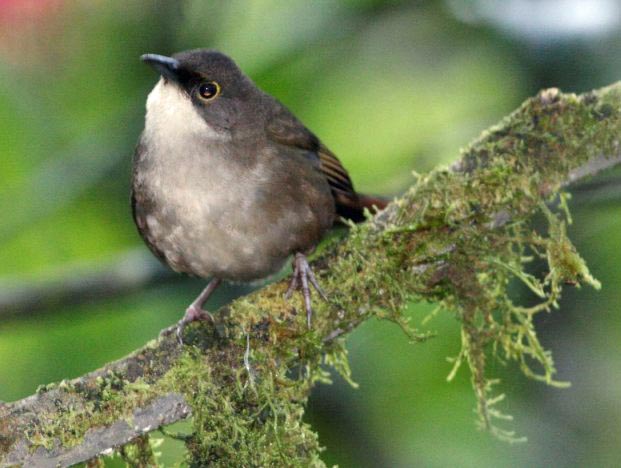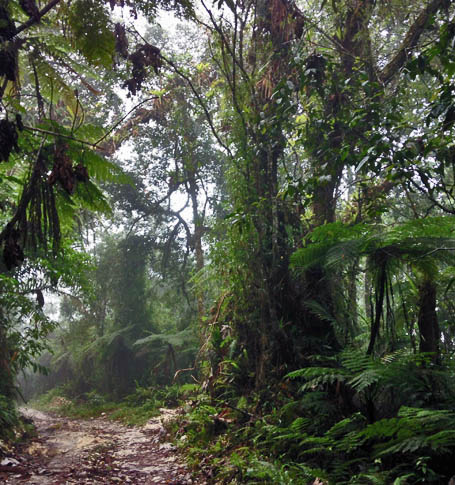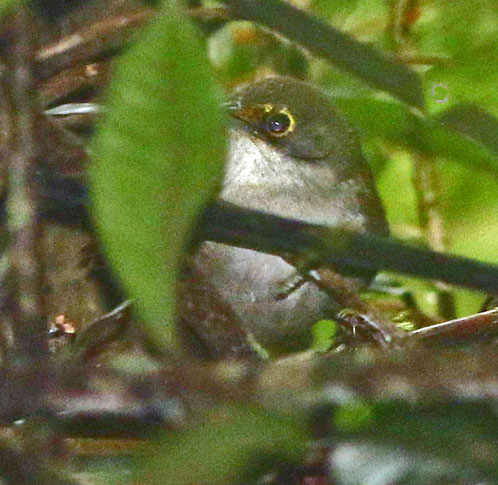
a web page by Don Roberson |
CHAT-TANAGERS Calyptophilidae |
||
|
||
This is a recently proposed bird Family. An extensive analysis of the relationships of nine-primaried passerines (tanagers, New World warblers, sparrows, buntings, etc.) by Barker et al. (2013) found evidence of evolutionary sets of "tanagers" that arose on islands in the Caribbean. Indeed, those authors even went so far as to propose four new families from this radiation [Spindalidae, Nesospingidae, Phaenicophilidae, Calyptophilidae]. Initially cautious, I placed these sets together in 2014 in just one family. Now, following Winkler et al. (2016), I've elevated three groups as Families, including the Chat-tanagers as the Calyptophilidae. The Chat-Tanagers diverged from other groups about 10-12 million years ago (Barker et al. 2013), but their placement in the phylogeny is not truly certain. In the "species tree" published by Barker et al. (2013) showed them as a sister group to the other Caribbean lineages, although with "weak support." We need further molecular research to fully document their true relationships. And despite the English names we use, these are not tanager. Yet most of them have been called "tanagers" in the past, and so we can continue to do so. We just need to recognize that there are many birds called "tanagers" that are now classified in other families (to use just one example, Scarlet, Summer, and Western Tanagers, familiar to North American birders, are actually in the cardinal/grosbeak family Cardinalidae). |
||
| It is usually much easier to hear the distinctive vocalizations of a chat-tanager than it is to see or photograph one. The morning I had arranged to search for a Eastern Chat-tanager with local guides was cold. After driving an hour in a 4-wheel-drive jeep on extremely rough roads, and crossing several rushing mountain streams enroute, we arrived at dawn inside a cloud forest at 1200m (about 4000') elevation in Cachote Reserve. Fog was thick above us, and water constantly dripped from the ferns and mosses that cloaked everything. We could hear a chat-tanager at dawn — and eventually located three over the morning — but had only a brief glimpse of the first one. Several hours later, deep down a dark ravine, we briefly encountered another close enough to get off a photo (below). Even at that the chat-tanager remained half-hidden, but fortunately one can see the species-diagnostic yellow eye-ring in the shot. | ||
|
||
Photos: Murray Lord photographed the Eastern Chat-tanager Calyptophilus frugivorus during a visit to the Dominican Republic between 26-28 Apr 2009. My photo of Eastern Chat-tanager is from Cachote, Dominican Republic, on 28 Feb 2017. Photos © Don Roberson except the chat-tanager attributed to © Murray Lord, and used with permission ; all rights reserved. Bibliographic note: There is no "family book" per se. The species in this set have been previously covered in books on tanagers, such as Islet & Isler (1987), or the applicable chapters on "warblers" or "tanagers" in the Handbook of the Birds of the World series. Literature cited:
|
 The
Chat-tanagers are a small family of understory passerines found only on
Hispaniola in the Caribbean. There are two chat-tanagers in genusCalyptophilus — Eastern Chat-Tanager (left, in a fine Murray Lord photo) and Western Chat-Tanager C. tertius— that are undergrowth skulkers on Hispaniola.
The
Chat-tanagers are a small family of understory passerines found only on
Hispaniola in the Caribbean. There are two chat-tanagers in genusCalyptophilus — Eastern Chat-Tanager (left, in a fine Murray Lord photo) and Western Chat-Tanager C. tertius— that are undergrowth skulkers on Hispaniola.
